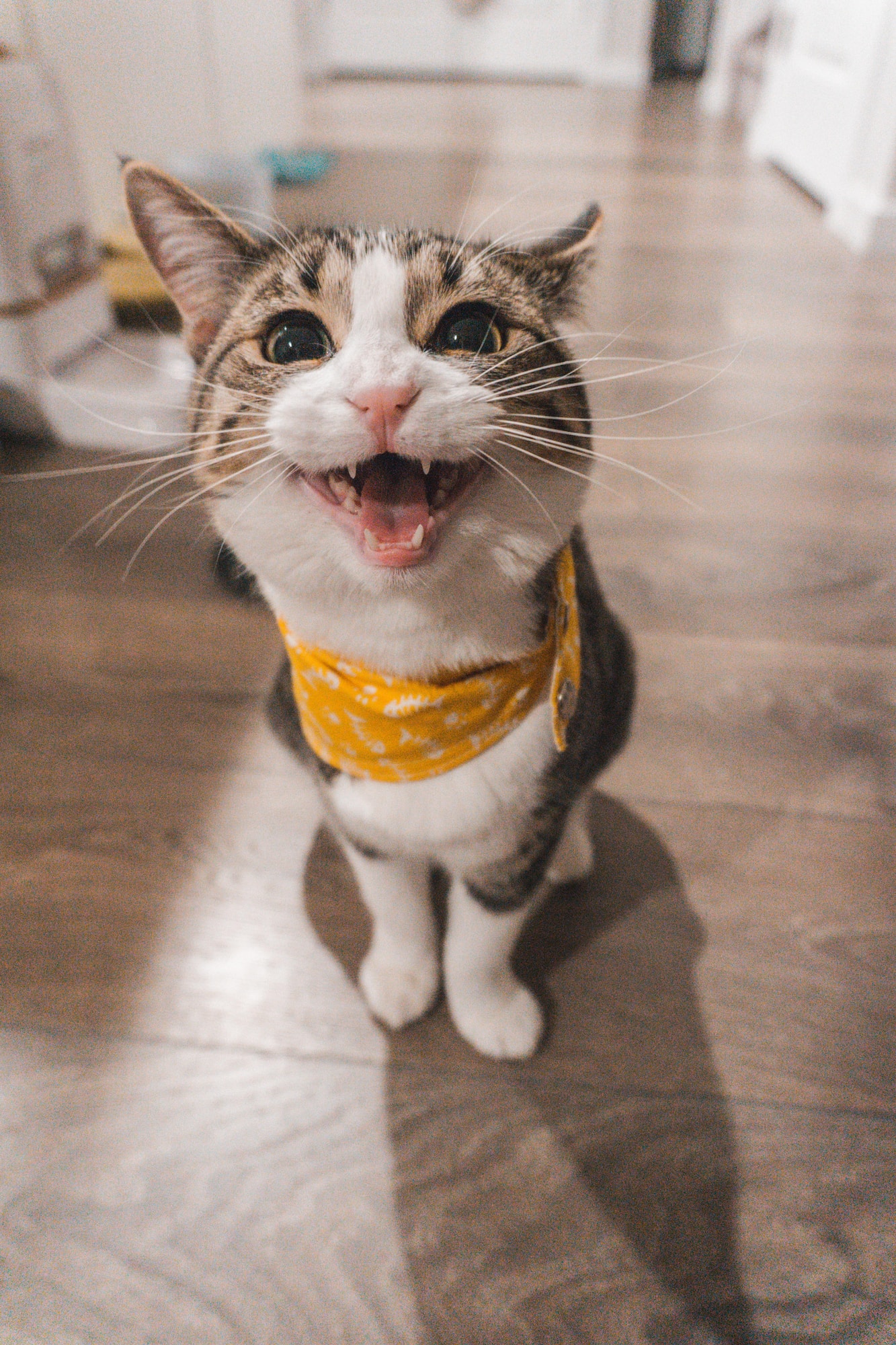- Domestication History: Originating around 7500 BC in the Near East.
- Communication: Involves vocalizations and body language.
- Reproduction: Litters range from two to five kittens.
- Popularity: Second most popular pet in the U.S. as of 2017.
- Etymology: The word ‘cat’ has a complex history across languages.
- Taxonomy and Evolution: Classified as Felis catus, with a rich evolutionary history.
- Anatomy and Senses: Specialized anatomy enhances their hunting skills.
A Glimpse into the World of Domestic Cats
Historical Insight: The Journey of Domestication
The domestic cat (Felis catus), integral to human societies, was domesticated in the Near East around 7500 BC. This transition from wild animals to beloved companions is a testament to their adaptability and enduring appeal.
The Language of Cats: Understanding Their Communication
Cats communicate through an array of sounds – meowing, purring, and hissing, complemented by expressive body language. This complex communication system is pivotal for their social interactions, both with humans and other cats.
Reproductive Patterns: From Kitten to Cat
Female domestic cats have a notable reproductive cycle, with the potential for several litters a year. This prolific breeding capacity has contributed to the widespread presence of domestic cats globally.
Cultural Impact: The Global Phenomenon
In 2017, the domestic cat ranked as the second most popular pet in the United States. Their global appeal is reflected in the substantial number of household cats and their cultural significance across various societies.

Etymology: The Evolution of a Name
The English word ‘cat’ has roots in multiple languages, including Latin, Germanic, and even African languages. This linguistic journey mirrors the cat’s own evolution as a domesticated species.
Taxonomy and Evolution: Tracing the Feline Lineage
Cats, under the scientific name Felis catus, share a common ancestor with the larger Felidae family. Their evolutionary path is marked by adaptations that have made them efficient hunters and beloved pets.
Anatomy and Senses: The Hunter’s Toolkit
Cats possess a unique anatomy, including retractable claws and sharp teeth, tailored for hunting. Their exceptional night vision, hearing, and sense of smell make them adept at detecting and capturing prey.

In-Depth Understanding of the Domestic Cat
Delving into the Cat’s World
Cats have distinct lifestyle patterns, with varying levels of activity and a preference for certain environments. Their interactions with humans range from affectionate companionship to feral independence, showcasing their versatile nature.
The Social Fabric of Cat Life
Contrary to popular belief, cats exhibit a range of social behaviors. From solitary hunters to members of a clowder, they demonstrate complex social dynamics that are fascinating to observe and understand.
Health and Longevity: Caring for Your Cat
A cat’s health and lifespan are influenced by various factors, including diet, environment, and access to veterinary care. Understanding these aspects is crucial for ensuring a long and healthy life for your feline friend.
The Cat in Human Society: An Enduring Relationship
Cats have held a special place in human society for millennia, revered in some cultures and feared in others. Their role has evolved from pest controllers to cherished pets, reflecting their enduring bond with humans.
Ecological Impact: The Hunter’s Footprint
Domestic cats have a significant impact on local wildlife populations, particularly as predators of birds and small mammals. This predatory nature, while natural, poses challenges in maintaining ecological balance, especially in urban and suburban settings.
Cat Care: A Responsibility
Owning a cat comes with the responsibility of ensuring their health and wellbeing. This includes regular veterinary check-ups, vaccinations, and understanding their nutritional and emotional needs.
Cats in Art and Mythology: A Symbolic Presence
Cats have been a subject of fascination in art and mythology, symbolizing various attributes like independence, mystery, and grace. Their depiction in different cultures reflects the multifaceted nature of their relationship with humans.
The Future of Domestic Cats: Trends and Perspectives
As the world changes, so does the role of domestic cats in our lives. Advancements in veterinary care, changing perceptions about pet ownership, and increased awareness about their ecological impact shape the future of these beloved animals.
Conclusion: Celebrating the Domestic Cat
The domestic cat, with its rich history, complex behaviors, and strong bond with humans, remains one of the most fascinating and beloved animals in our lives. Understanding and appreciating their unique characteristics and needs is key to ensuring a harmonious coexistence and a future where cats continue to thrive as cherished members of our households and communities.
